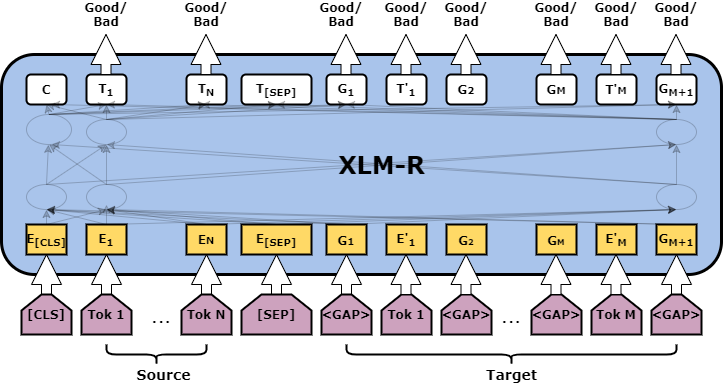Word Level TransQuest Architecture
WE have one architecture that is capable of providing word level quality estimation models; MicroTransQuest.
Data Preparation
Please have your data as a pandas dataframe in this format.
| source | target | source_tags | target_tags |
|---|---|---|---|
| 52 mg wasserfreie Lactose . | 52 mg anhydrous lactose . | [OK OK OK OK OK] | [OK OK OK OK OK OK OK OK OK OK OK] |
| România sanofi-aventis România S.R.L. | Sanofi-Aventis România S. R. L. | [BAD OK OK OK] | [BAD BAD OK OK OK OK OK OK OK OK OK] |
Please note that target_tags_column has word level quality labels for gaps in the target too. Therefore, it has 2*N+1 labels, where N is the total number of tokens in the target. For more information please have a look at WMT word level quality estimtion task.
Now, you can consider MicroTransQuest to build the QE model.
MicroTransQuest
The input of this model is a concatenation of the original sentence and its translation, separated by the [SEP] token. As shown in the Figure target sentence contains gaps too. Then the output of the each token is passed through a softmax layer to reflect the quality scores.

Minimal Start for a MonoTransQuest Model
Initiate and train the model like in the following code. train_df and eval_df are the pandas dataframes prepared with the instructions in Data Preparation section.
1 2 3 4 5 | |
An example microtransquest_config is available here.. The best model will be saved to the path specified in the "best_model_dir" in microtransquest_config. Then you can load it and do the predictions like this.
1 2 3 4 5 6 | |
Tip
Now that you know about the word-level architecture in TransQuest, check how we can apply it in WMT QE shared tasks here.